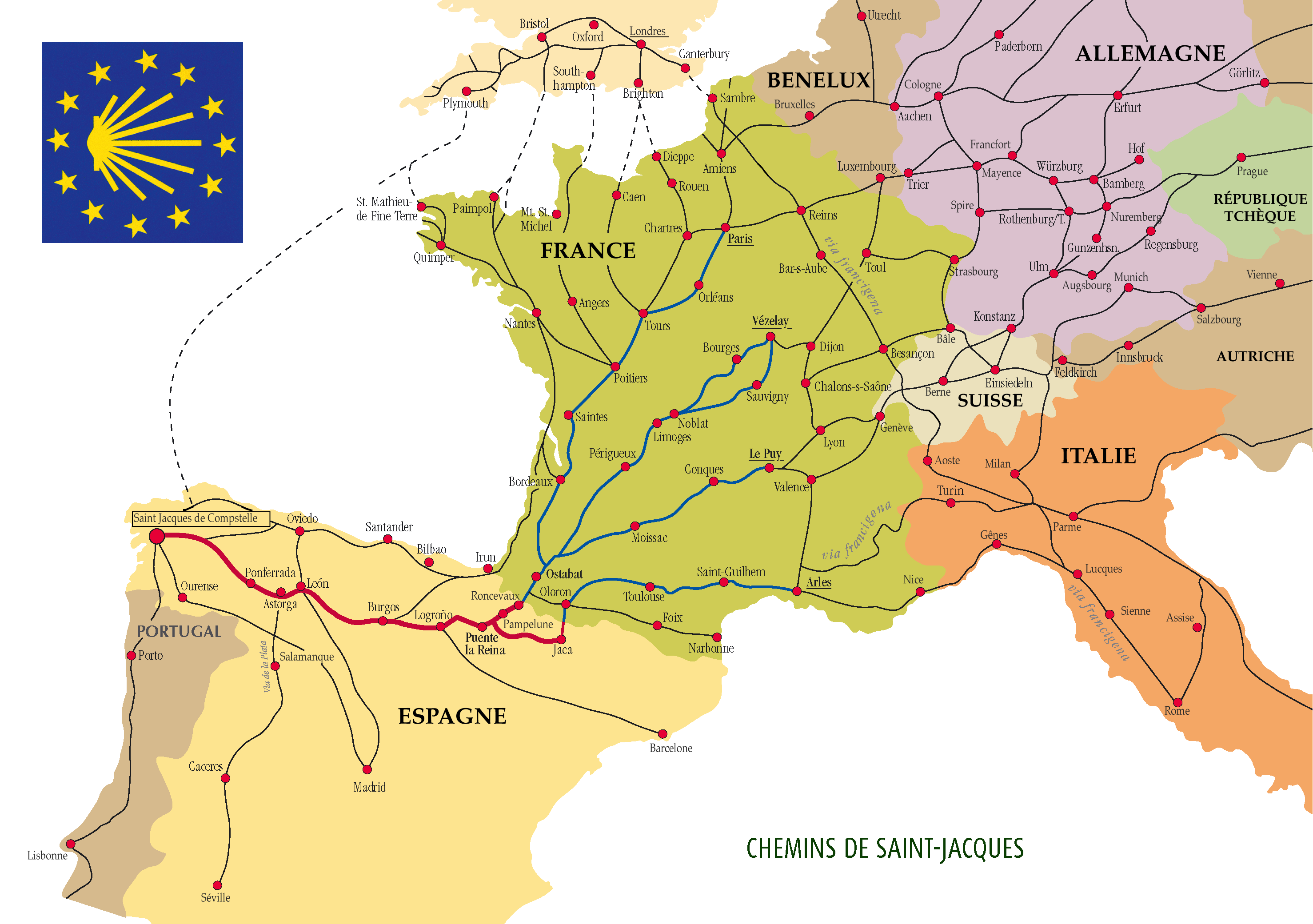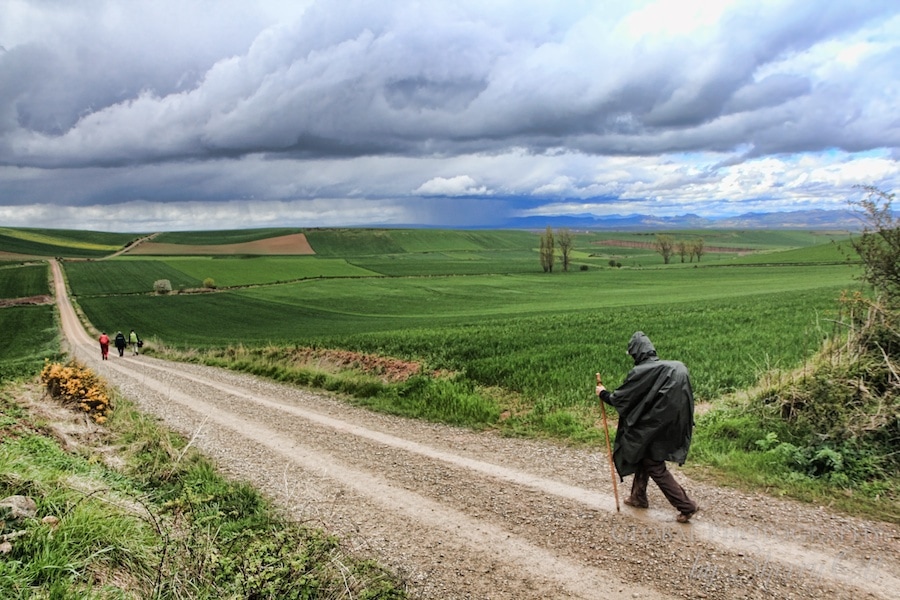 |
| The many Camino Routes. Ours is highlighted in red. |
The Decision
My wife and I have casually discussed the Camino for years. Do we want to try it? Could we finish it? Could we get time off work to even start it? As the casual conversation became serious, the biggest question we had to answer for ourselves was, "Are we interested in going on the Camino or interested in the IDEA of going?"It is one thing to dream about a big trip. It is fun to imagine the good days and unique experiences and fall in love with an idea of an adventure. It is quite another thing to cope with the realities of lost work and wages, the cost of gear and airfare, the burden of carrying everything you need on your back, and the pain of blisters and sore muscles after weeks of walking. Most stop dreaming at the mention of those realities and with good reason. Against the tide of sound logic and sense, we decided to walk the Camino.
 |
| A Camino Marker |
The Reason
Why would anyone subject themselves to such misery? The answers are as varied as those who walk the Camino. The first pilgrims walked to be nearer to Christ by paying homage to one of his apostles. Today, people of all faiths walk the Camino for their own reasons, both spiritual and personal. Some walk for weight loss and conditioning. Others walk to rid themselves of a bad habit or to form new ones. Some walk to unplug from the modern world and find a simpler path. Some just want more time with God. All are great reasons to walk, and I hope to get those benefits as well. I have my own reasons to walk.One reason is I'm drawn to the Camino itself--an ancient path hewn on Roman trade routes by faithful pilgrims. As a Catholic, I have a world-wide Christian family with history and traditions stretching across thousands of years back to the days of Christ. The Camino allows me to follow in the footsteps of my Christian brothers and sisters from centuries past and to add my own steps to this history.
I've studied Christian history in books. I've visited amazing cathedrals and seen relics adored by millions. With the Camino, I can live this history. Granted, I have the benefits of modern, lightweight materials and technology, but I will still be a simple pilgrim. I will carry all my possessions. I will live daily with food bought and shelter found along the way. I will leave each mile behind using my own two feet. With this, I have the chance to be the Camino's history instead of seeing it through a picture or the words of another.
I have other personal reasons for walking, but to hear those you must either meet me on the Camino or buy me a beer.
 |
| Pilgrims in the rain. Image from Ottsworld.com blog. She has a great travel blog. |
Frequently Asked Questions
While explaining our trip to others, these are the most common questions I've answered.Questions for You
The Camino makes a topic for interesting reflection.- If you had to limit your possessions to 20 lbs for six weeks, what would you keep? What could you leave?
- For what would you walk 15 miles? Would you walk everyday for a month?
- What would you do with six weeks away from jobs and responsibilities?
- How much comfort and convenience are you willing to give up for a unique experience?

No comments:
Post a Comment